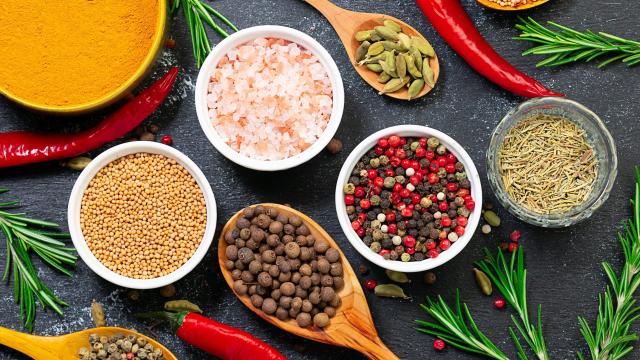Everyone wants to eat healthy, but “healthy” doesn’t have a specific meaning. Neither do lots of other food-related buzzwords that are used on packaging or by influencers. These words and phrases are meant to make you feel good (or bad) about your choices, while giving you little to no useful information.
“Clean”
“Clean” tops the list. It just means “things I want to believe are good,” and it does this by drawing an us-versus-them line. These foods are clean, implying that those foods are…dirty? Unless we’re talking about an omelet that got dropped on the floor, this is an absolutely meaningless distinction.
“Inflammatory” or “anti-inflammatory”
Inflammation is an intricately coordinated process that our body uses to fight disease, repair damaged tissues, and more. It’s not always a bad thing. But since inflammation is involved in cardiovascular disease, there’s a hypothesis that preventing inflammation in general may reduce your risk of certain health conditions.
It’s an interesting hypothesis, and even has some support behind it, but there is little evidence linking specific diets to inflammation, and in turn to health outcomes. A lot of our ideas about what constitutes an “inflammatory” food are based on lab studies or on population-level research that we can’t really narrow down the effects of individual foods.
“Real sugar”
Cane sugar is trendy now it’s not high-fructose corn syrup, but there is very little difference, nutritionally, between cane sugar (or beet sugar) and the oft-demonized HFCS. Both are roughly half glucose and half fructose; HFCS is only “high fructose” in the sense that it’s higher in fructose than regular corn syrup, which is mostly glucose.
And if you’re going to come at me with the fact that HFCS can be 55% fructose instead of 50% fructose, I’m going to ask how much sugar you’re eating that you think a subtle shift in the makeup of five per cent of your sugar intake is going to make any kind of real-world difference.
“Multigrain” and “grams of whole grain”
Nothing wrong with multigrain bread (I love it), or stuff that is labelled as seven-grain or nine-grain or whatever. But multigrain doesn’t mean whole grain. If you’re trying to get more fibre and more whole grains into your diet, you want to look for foods that are entirely whole grains — not the refined flours of several different grains mixed together.
These labels are betting on you seeing the word “grain” without really thinking about what it means. Same deal with labels that say they contain so many “grams of whole grain.” We should all be getting around 30 grams of fibre each day, and whole grains are a good source of that, but 30 grams of whole wheat flour (for example) only contains about 3 grams of fibre.
“Net carbs”
“Net carbs” is a roundabout way of saying that some of the carbs in a food don’t count. The idea comes from a good place, I think: an apple with 10 grams of sugar and 3 grams of fibre shouldn’t be considered equivalent to a handful of Skittles that contains sugar and almost nothing else.
But you don’t need a calculator to tell you the apple brings more to the table, nutritionally speaking, than the candy. Reducing foods to their macros is unnecessarily narrow-minded, and has resulted in companies like Atkins creating and marketing shakes and bars that are low in net carbs, when you could simply eat whatever normal food meets your total calorie needs.
“Gut health”
It’s true the microbes living in our intestines are essential to our health, and that we sometimes suffer ill effects when their little ecosystem down there gets disrupted.
But this is an area of active research, and scientists still haven’t been able to nail down the details of what makes one person’s gut “healthy” and another’s “unhealthy.” And we definitely don’t know enough to say that you just need to eat this or that and your gut microbes will be happy.
“Processed”
Like “clean,” this is a term thrown around mostly to demonize cheaper or more widely-available foods, and to make what is on the speaker’s plate look more virtuous by comparison.
Even the most scientific attempts to define what exactly qualifies as a “processed” food tend to run into philosophical as well as nutritional problems. The NOVA classification considers hard liquor to be more processed than wine, but does that really make wine better for you? It also considers canned vegetables to be processed and frozen vegetables not, among other dubious distinctions.
“Volume”
The idea of high-volume eating is that some foods are more filling than others. So eat a salad or a soup, volumetrics proponents will suggest, because lettuce and broth will both make you feel full without delivering many calories.
This may be true, but they also aren’t delivering much in the way of proteins, vitamins, or the other nutrients our bodies need. And while you may be able to fool your stomach for a few minutes, your body is too smart to be tricked in the long term. An hour after that plain salad, you’ll be hungry again — and this time maybe you should give yourself some protein, fat, and higher density carbs.

Leave a Reply
You must be logged in to post a comment.